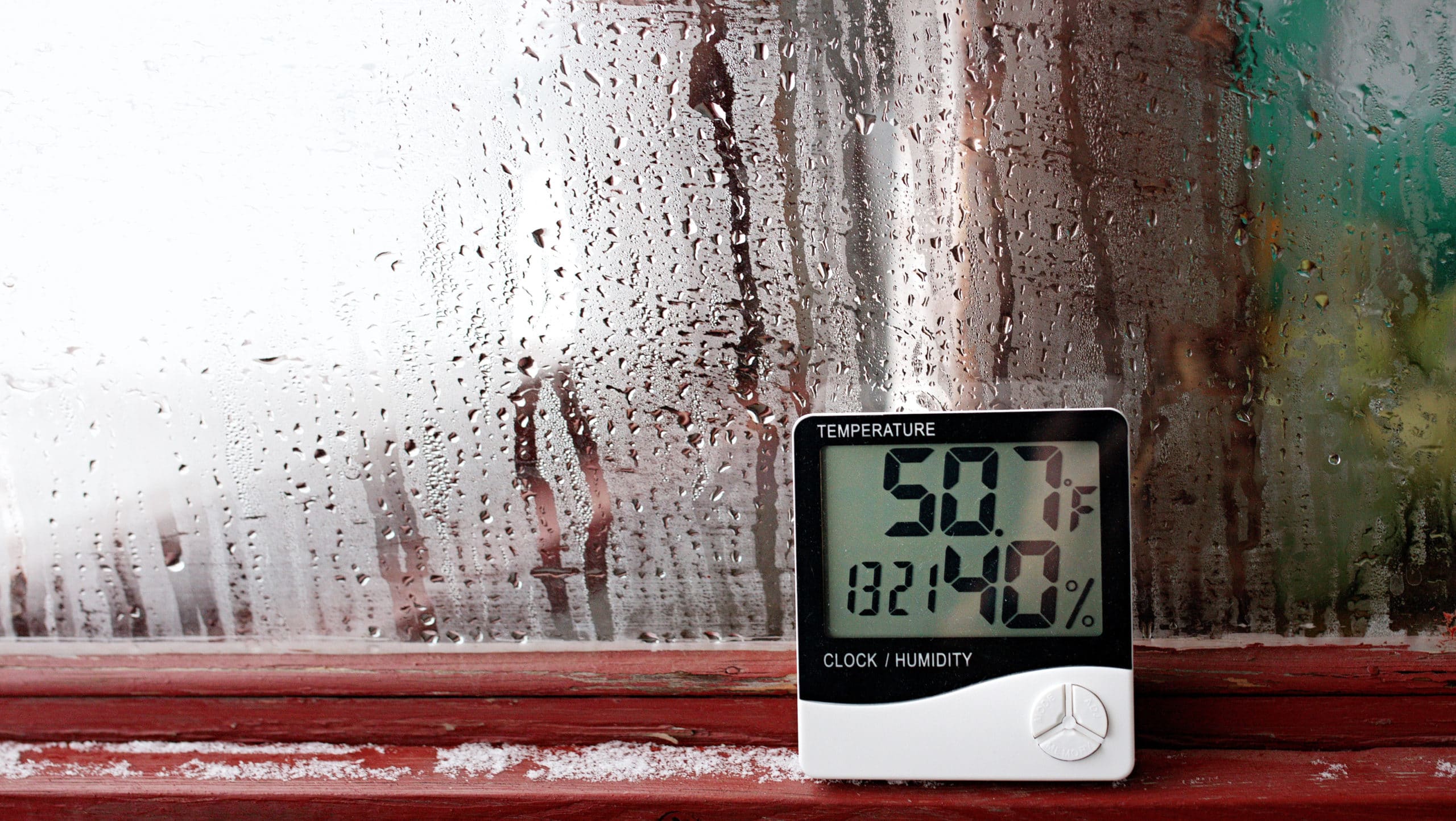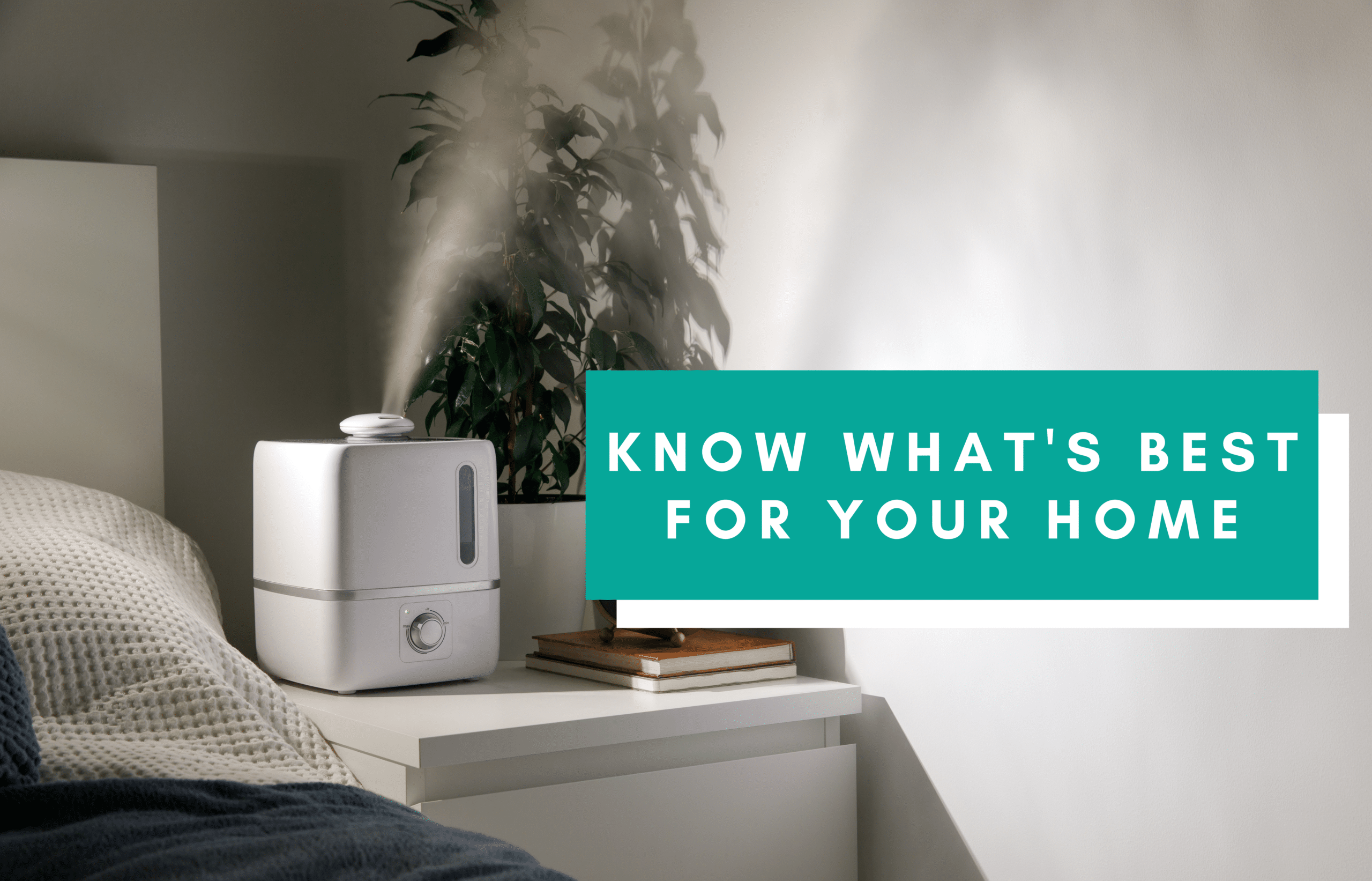During the summer months, humidity can become unbearable. When the weather gets to be hot outside and humidity reaches high levels, you want to ensure your home is cool and comfortable during the day. This is crucial to keeping you healthy and protecting the overall state of your home.
Ensuring your home has the ideal humidity is crucial to feeling comfortable in hot and humid weather. It’s important to consider your home’s humidity, especially during very hot or cold months where it can be more seriously affected.
What is the Ideal Home Humidity?
Humidity is determined by the level of moisture health in the air we breathe. Though it changes day to day, humidity tends to be higher in the warm summer months, and lower in colder months. Where you live and the current climate of your area will also have a significant impact on the outside humidity.
The humidity outside - especially when particularly high or low - will inevitably impact your home. To feel comfortable, you’ll want to maintain a reasonable humidity level indoors. As humans, we are comfortable with anywhere between 30-50% humidity. We do need some level of moisture in the air to be able to feel normal in our homes but don’t want the humidity to reach the high percentages observed in the hotter months of the year.
Home Humidity too High
Too much humidity in your home, though, can lead to a variety of issues that impact different areas. High humidity can negatively impact your health. If you’re living in a humid home, your body will work to regulate your temperature and cause you to feel hotter overall. What’s more, high humidity can lead to heightened allergies, as humid temperatures exacerbate allergens. Long-term exposure can make you feel sick often.
Additionally, high humidity can cause damage to your home. Your appliances and properties that are more sensitive to heat and moisture will likely malfunction after a while, and the overall integrity of your home will be negatively impacted. Even worse, high humidity can encourage mold to grow rapidly due to the heightened moisture content. This can lead to very serious health issues for everyone in the home, as well as damage your interior.
Home Humidity too Low
Though it doesn’t seem as serious, too low humidity in the home can lead to significant issues as well. Very dry air can emphasize health issues, specifically asthma and other breathing problems. What’s more, dry air can cause people to feel uncomfortable and itchy, and generally dry you out leading to other health problems.
Too low humidity in the home can also cause internal damages. If your home remains dry for a longer period of time, it is prone to structural issues. Cracked and damaged doorways and molding, as well as warping of wood and other materials can lead to significant problems.
Overall, too high or too low humidity can lead to plenty of problems you will want to avoid. It’s important to maintain your home’s humidity and understand when it may need to be adjusted.
Key Considerations in Adjusting Your Home’s Humidity
There are a few ways to manage your home’s humidity and help to bring it to a more comfortable level. If you’re noticing your home is too humid or too dry for a period of time, consider the following:

1. Utilize Your Air Conditioner
Air conditioners don’t just help to cool down your home on hot days - they also help to reduce humidity in the home. Your air conditioner will remove the humid air while pumping in cool air to bring the temperature and humidity down overall.
If you’re using your air conditioner often and not noticing much of a change with the humidity in your home, your air conditioner may be having some issues. Be sure to replace the filter regularly for optimal performance, and if you’re still having issues contact a professional to take a look. Your air conditioner may be old and in need of some tuning up to get it back to working order.
2. Invest in a Humidifier/Dehumidifier
If a particular area of your house is experiencing too high or too low humidity, consider investing in a humidifier or dehumidifier to help. A humidifier will release clean mist into the air, adding to the overall moisture and reducing some of the dryness you may be experiencing.
Alternatively, a dehumidifier will remove moisture from the air. These appliances can be placed in your furnace air handler and help cool your home down and get rid of the hot, sticky air you may be experiencing.
Both of these appliances will help to regulate humidity in areas of your home that may experience abnormal humidity levels.
3. Use Your Ventilation Fans
After using your stovetop or taking a long, hot shower, you’re bound to have more humid air throughout your home. To help combat some of the humidity released by these activities, be sure to use your ventilation fans in your kitchen and bathroom to remove some of the humid air.
Be sure to keep your fans on after you’ve finished cooking or showering until the humidity has noticeably gone down. This will also take some of the work off of your air conditioner to keep your home cool. If you are keeping your ventilation fans on for a while after these activities, and notice your home’s humidity doesn’t change, contact a professional to take a look at your ventilation system and determine if there are any problems.
4. Replace Your Carpet
Depending on the type of carpeting you have in your home, it may be holding onto more moisture than you realize. Some carpets may be contributing to the humidity in a home due to their moisture-trapping capabilities.
If you’ve been regularly using your air conditioner and ventilation fans to remove humidity from your home, and don’t notice much of a difference, your carpet may be to blame. Replacing your carpet to one that captures less moisture will likely help the situation.
5. Take Cooler Showers
Though ventilation fans can help your home humidity significantly, taking cooler showers is a good way to ensure your home also stays cooler. Instead of taking a hot shower during the summer, consider bringing down the temperature a little bit to reduce humidity. You don’t need the water to be freezing cold - just cool enough that you aren’t producing a ton of steam that fills up your bathroom.
This will cause less humid air from escaping your shower and adding to the overall moisture in your home. From here, your ventilation fan will be more effective and not have to work as much to remove the humid air. Additionally, your air conditioner won’t have to work as hard either - which can contribute to a lower electricity bill as well!
6. Weatherstripping Doors and Windows
A lot of the humidity in our home can be a result of what’s going on outside our homes. Weatherstripping is a good way to ensure outdoor air doesn’t come inside the more vulnerable areas of our home.
Weatherstripping seals doorways and windows to prevent humid or dry air from coming inside, making the air in our homes more comfortable overall. During both humid and dry times of the year, this will help to seal your home and keep it comfortable year-round. This will also ensure your preventive methods work more effectively.
7. Replace Wallpaper and Vinyl
Wallpaper and vinyl are known to trap moisture within homes, adding to the overall humidity. Over time, these materials can trap an obscene amount of moisture on your wall and cause serious damage. They can also lead to mold growth if left on for long periods. Where ever possible, replace wallpaper and vinyl on your walls with paint. Paint is far less likely to trap excess moisture and ruin your walls.
8. Check Your Insulation
Home insulation is critical to ensuring outdoor air doesn’t significantly affect your home. Especially in older homes, insulation may need to be checked out by a professional to see whether or not it needs to be replaced.
Additionally, you will want to check that your pipes are properly insulated as well. Pipes that aren’t properly insulated are likely to sweat and produce condensation, which will add to the humidity in your home. Ensuring your pipes are properly insulated can prevent this from happening.
An HVAC professional can work with you to check your home’s insulation and make sure everything is in good working condition. If not, they will be able to work on fixing your insulation to ensure your home humidity doesn’t get out of hand.

Maintaining Ideal Humidity at Home
Nobody wants their home to feel uncomfortable. Too high or low humidity can lead to discomfort while at home, as well as other health and safety issues that can cause serious damage to the interior of your house as well as your personal health.
If you notice your home’s humidity seems off, be sure to evaluate it using a gauge to determine where there may be issues. From here, you can use some of these tips to manage the humidity indoors.
If you’re still experiencing issues, it is best to contact an HVAC expert to take a look at your home and identify what may be causing the issue. They will help you diagnose the issue and work towards the ideal humidity level for a more comfortable home.

